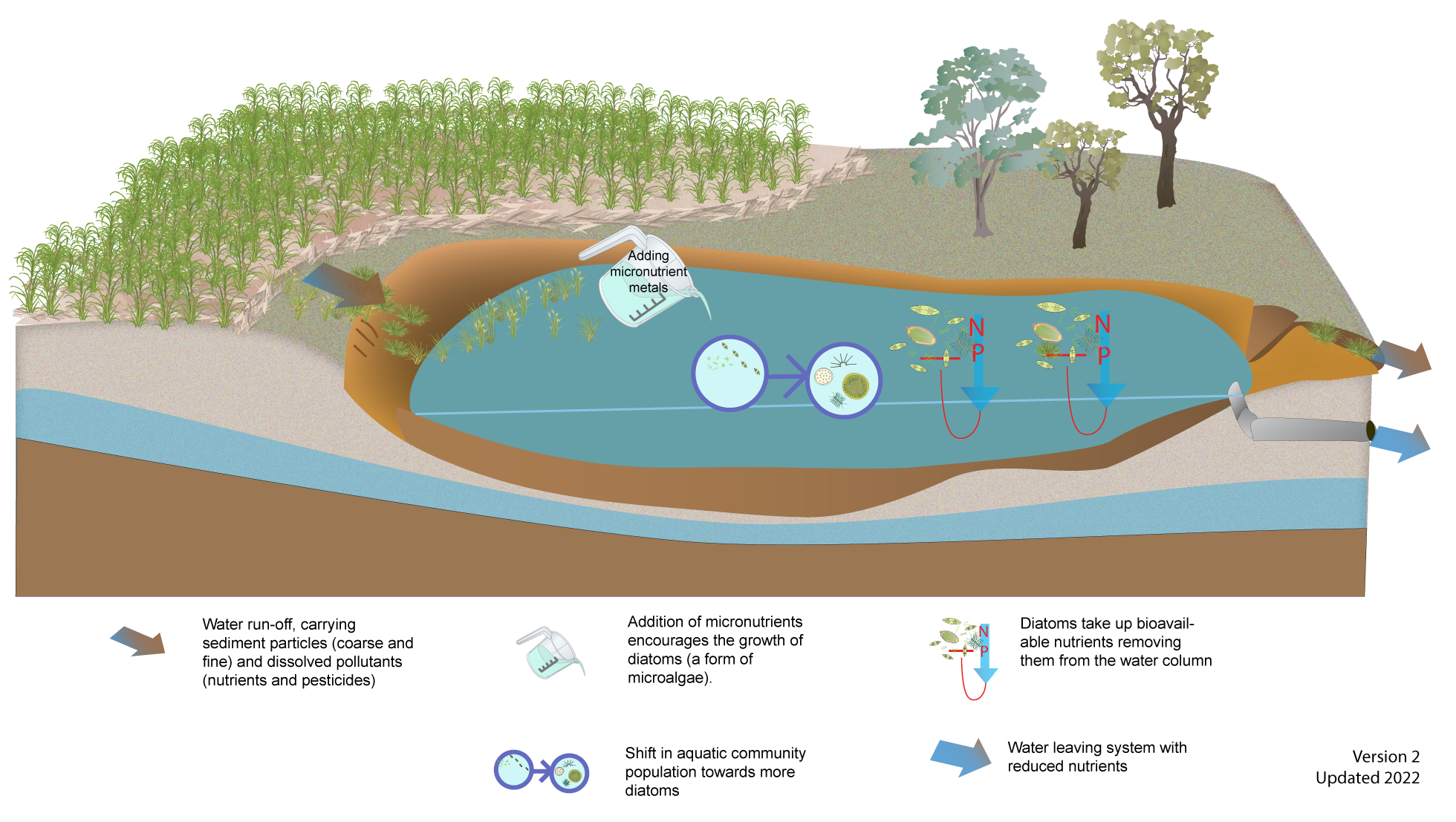|
|
Micro-nutrient dosingMicro-nutrient dosingOther name/sInorganic micro-nutrient fertiliser dosing DescriptionInorganic micro-nutrient dosing boosts diatom growth with the result that inorganic nitrogen and phosphorus (N and P) concentrations in the waterbody are reduced as diatoms take up these macronutrients when they grow. As the diatoms preferentially take up nutrients, undesirable cyanobacteria (blue-green algae) are reduced[1][2]. Micro-nutrient dosing uses a range of micro-nutrients specifically selected to promote plant and diatom growth. Using nano-technology, these micro-nutrients are adsorbed to nano-scale gels of silica. This makes the nutrients chemically unavailable unless the silica gel is used by the diatoms. As diatoms are the only microalgae or cyanobacteria to have a requirement for silica, only the diatoms receive a boost from the micro-nutrients. When the diatoms get the micro-nutrients they are able to grow more (on a biomass basis) than if they were micro-nutrient deficient. Therefore they take up more inorganic nitrogen and phosphorus from the water to support their growth. As the diatoms are the basis of many food webs, they provide a bioavailable/readily mobile way to move the nutrients nitrogen and phosphorus into the food chain. Further research is required to determine the fate of the nutrients. This treatment technology was originally designed to control blue-green algae blooms, but with a reduced concentration of N and P in the water, growth of other algae and macrophytes are reduced. In some cases, where treated wastewater with diatoms has been used to irrigate pasture land, operators have observed improved soil structure and nutrient content. Services and benefits:
DisclaimerIn addition to the standard disclaimer located at the bottom of the page, please note the content presented is based on published knowledge of treatment systems. Many of the treatment systems described have not been trialled in different regions or land uses in Queensland. The information will be updated as new trials are conducted and monitored. If you have any additional information on treatment systems or suggestions for additional technologies please contact us using the feedback link at the bottom of this page. References
Last updated: 10 June 2022 This page should be cited as: Department of Environment, Science and Innovation, Queensland (2022) Micro-nutrient dosing, WetlandInfo website, accessed 8 May 2025. Available at: https://wetlandinfo.des.qld.gov.au/wetlands/management/treatment-systems/for-agriculture/treatment-sys-nav-page/altering-trophic-processes/ |

 — Department of the Environment, Tourism, Science and Innovation
— Department of the Environment, Tourism, Science and Innovation




